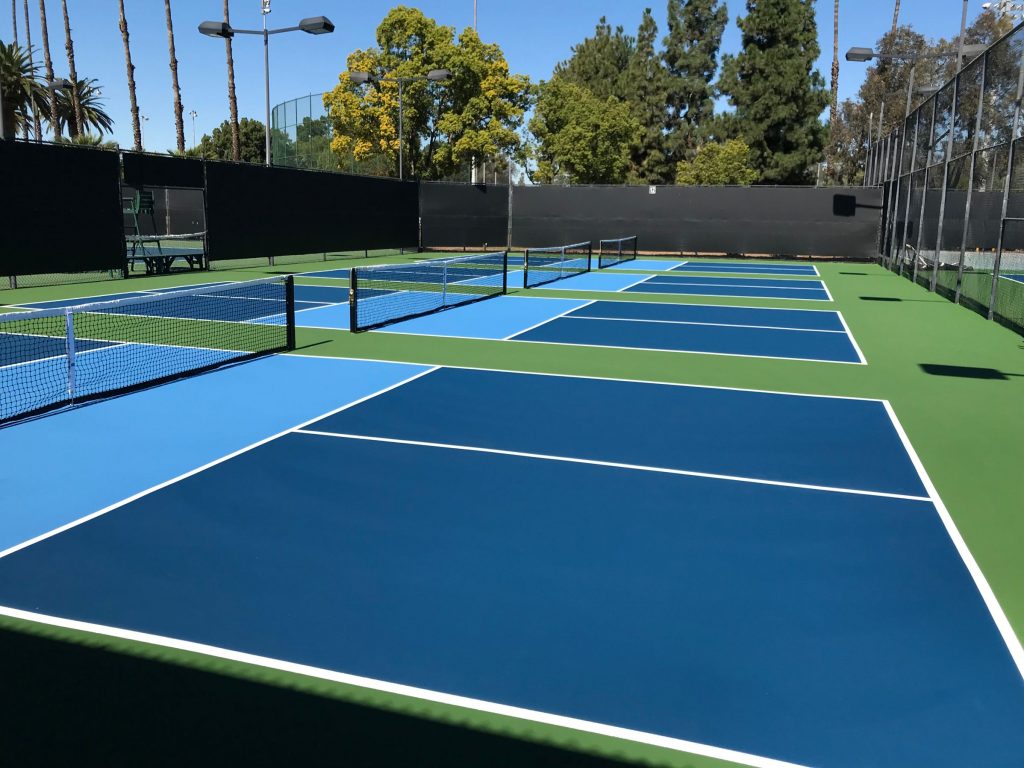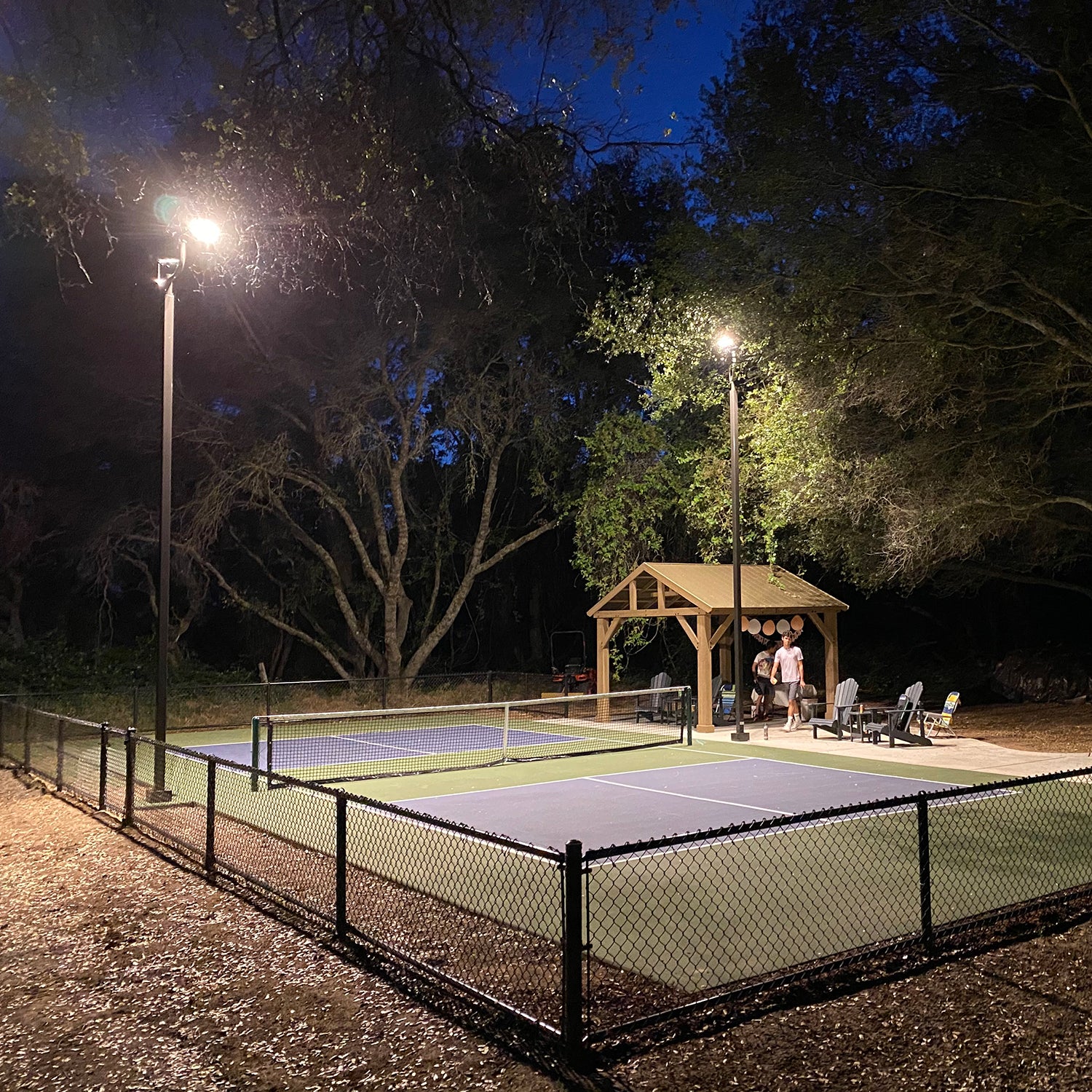Typical Mistakes to Avoid in Your Pickleball Court Construction Process
Typical Mistakes to Avoid in Your Pickleball Court Construction Process
Blog Article
Navigating Laws for Pickleball Court Building And Construction in Your Area
Building a pickleball court in your location calls for a nuanced understanding of various local policies, consisting of zoning laws, building licenses, and safety standards. Each community enforces specific standards that can significantly affect the expediency of your task. Engaging with regional authorities and the community is important for making sure compliance and cultivating support. However, navigating this governing landscape can be taxing and complicated. What are the key actions you should think about to prevent prospective risks and make sure a smooth construction procedure?
Comprehending Neighborhood Zoning Laws
When taking into consideration the construction of a pickleball court, recognizing neighborhood zoning regulations is crucial to making sure compliance and preventing possible legal issues. Zoning regulations dictate how land can be utilized and usually include specs relevant to recreational facilities. These regulations can differ considerably by district, affecting factors such as court positioning, size, lights, and noise degrees.
Prior to launching building and construction, it is crucial to get in touch with the regional zoning board or preparation department to ascertain the particular regulations that put on your residential or commercial property. Certain areas might restrict leisure activities, while others may need certain licenses or adherence to specific standards. It is additionally important to take into consideration obstacles, which figure out exactly how far structures should be from residential or commercial property lines or various other buildings.
Furthermore, private developments, such as property owner organizations (HOAs), might enforce their own policies concerning the building and construction and usage of pickleball courts. Comprehending these regulations can avoid expensive modifications or litigation down the line. Involving with regional stakeholders and neighborhood members can give beneficial understandings and foster support for your job, making certain that it aligns with the community's assumptions and requirements.
Getting Necessary Structure Allows
Exactly how does one browse the intricacies of acquiring essential building permits for a pickleball court? The process begins with recognizing regional policies and demands stated by metropolitan authorities. Generally, you will certainly need to submit a detailed website plan that describes the suggested court measurements, products, and design. This plan needs to adhere to zoning regulations and any type of details regulations concerning leisure centers.

As soon as licenses are obtained, it is vital to stick to any kind of evaluation timetables and demands throughout the building and construction stage. Keeping interaction with neighborhood authorities will facilitate a smoother authorization process and aid stay clear of prospective problems. By completely preparing and comprehending the allowing landscape, you can effectively browse the complexities involved in creating a pickleball court while continuing to be compliant with all local policies.

Assessing Environmental Impact
An extensive evaluation of ecological effect is essential when planning the building and construction of a pickleball court. This examination helps determine prospective impacts on regional ecological communities, water sources, and neighborhood appearances. Trick aspects to think about consist of site selection-- ensuring that the court official website is not improved ecologically sensitive land, such as wetlands or environments for endangered species
Soil stability and drain patterns ought to be examined to avoid disintegration and water merging, which can adversely impact surrounding greenery and wild animals. Furthermore, the option of materials is vital; going with sustainable and environment-friendly alternatives reduces ecological injury.
The execution of effective stormwater monitoring practices is an additional essential element, as it helps minimize overflow and sedimentation. Involving with neighborhood ecological companies can offer important understandings into guidelines and best methods specific to your area.
Last but not least, area input can be useful in understanding any regional ecological concerns and fostering assistance for the task. By conducting a detailed environmental impact evaluation, stakeholders can make sure that pickleball court building straightens with sustainable practices and adds favorably to the community's ecological wellness.
Following Safety Criteria
Ensuring compliance with safety and security requirements is critical next page for the successful building and construction and procedure of a pickleball court. Abiding by well established safety and security guidelines decreases the risk of injuries and mishaps, ensuring a safe atmosphere for players.
Trick security requirements consist of correct court measurements, surface materials, and lighting demands. The court must meet the main dimensions of 20 feet broad by 44 feet long for doubles play, with suitable buffer areas to prevent injuries from wayward rounds. Pickleball court construction. The surface area needs to be constructed from non-slip products to enhance traction and decrease the chance of falls
Additionally, lighting should suffice for night play, giving uniform illumination to avoid shadows that can impede exposure. Regional building codes might additionally dictate specific requirements for fencing and web height to make sure gamer safety and avoid unauthorized accessibility to the court location.
Regular assessments and upkeep are important to maintain these requirements gradually. By prioritizing safety conformity, court owners not just protect gamers but additionally promote a favorable online reputation within the community. This dedication to safety and security can urge higher involvement and pleasure of the sport, eventually adding to its growth and sustainability.

Engaging the Area in Planning
Area participation in the drawing board of pickleball court building and construction can significantly enhance the task's general success. Engaging regional citizens and stakeholders fosters a sense of ownership and encourages collaborative decision-making, which can result in wider assistance for the initiative.
To efficiently involve the community, coordinators ought to launch public conferences or workshops, providing a system for citizens to articulate their point of views and choices regarding area, style, and services. Surveys and feedback kinds can also be used to gather understandings from a larger target market, making certain that varied viewpoints are taken into consideration.
Additionally, developing a neighborhood advisory board can promote recurring discussions and address worries throughout the planning procedure. This board can consist of agents from various demographics, such as regional colleges, recreational organizations, and neighborhood watch, therefore amplifying community representation.
Effective interaction is vital; updates concerning the job need to be routinely shared via e-newsletters, social media sites, or regional publications. By focusing on neighborhood interaction, planners can cultivate enthusiasm, mitigate potential opposition, and produce a pickleball center that really reverberates with local values and needs. This joint strategy not just improves the job yet additionally reinforces community ties.
Conclusion
To conclude, navigating the complexities of pickleball court building and construction necessitates a comprehensive understanding of local regulations, consisting of zoning websites legislations, building licenses, and security standards. Conducting ecological assessments is important to alleviate eco-friendly effect, while community interaction can enhance assistance for such jobs. By sticking to these guidelines and fostering cooperation, successful execution of pickleball courts can be achieved, advertising entertainment opportunities and community health. Proceeded persistance in these locations will make sure certified and sustainable growth.
Building a pickleball court in your location calls for a nuanced understanding of various regional regulations, including zoning regulations, structure permits, and security standards.When taking into consideration the construction of a pickleball court, recognizing regional zoning regulations is essential to making sure conformity and preventing possible legal issues. By thoroughly preparing and recognizing the allowing landscape, you can successfully navigate the complexities involved in building a pickleball court while continuing to be certified with all regional policies.
In conclusion, browsing the intricacies of pickleball court construction demands a thorough understanding of local guidelines, consisting of zoning regulations, building licenses, and security criteria. By adhering to these standards and promoting cooperation, successful execution of pickleball courts can be attained, advertising recreational opportunities and community wellness.
Report this page